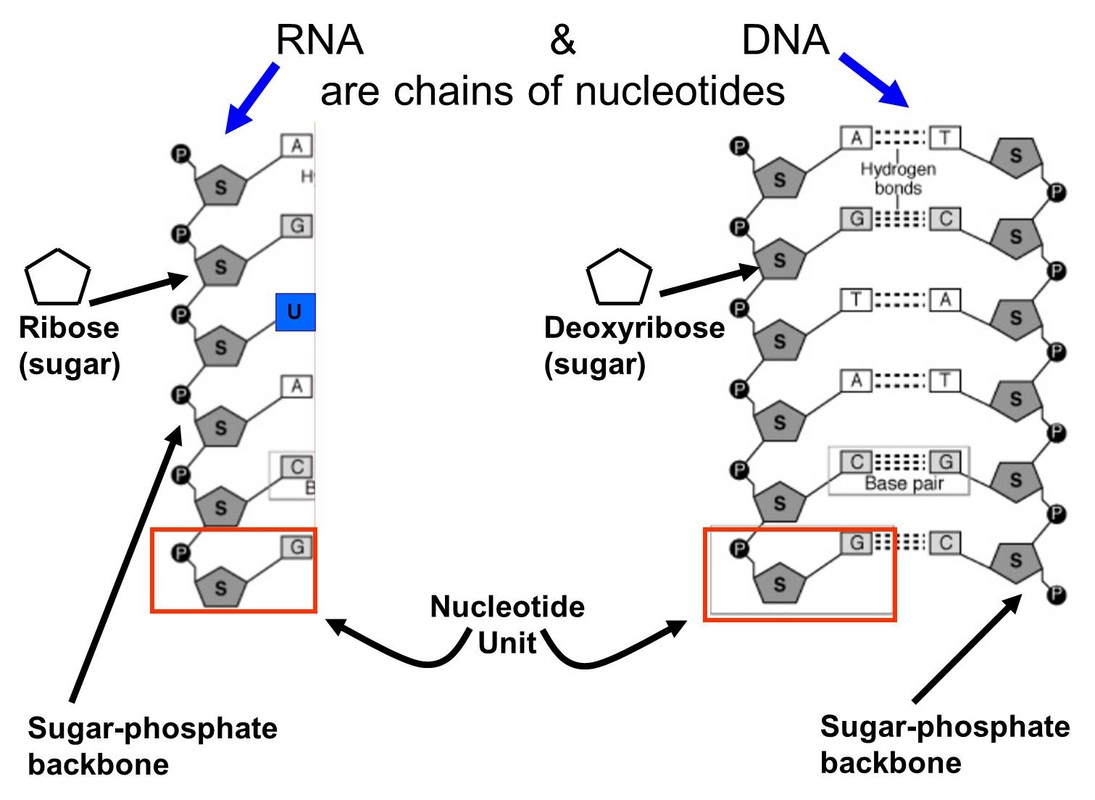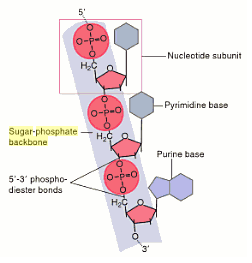

#Sugar phosphate backbone chromosome code#
This code contains only ones and zeros, and think of all the things your computer can do. Even more profound is the binary code used to write computer programs. But think about the English language, which can represent a huge amount of information using just 26 letters. It might be hard to imagine that 4 different “letters” can communicate so much information. The sequence of these four bases can provide all the instructions needed to build any living organism. But there are only four bases found in DNA: G, A, C, and T. How can one kind of molecule contain all the instructions for making complicated living beings like ourselves? What component or feature of DNA can contain this information? It has to come from the nitrogen bases, because, as you already know, the backbone of all DNA molecules is the same. The genetic information of an organism is stored in DNA molecules. The (c) major and minor grooves are binding sites for DNA binding proteins during processes such as transcription (the copying of RNA from DNA) and replication. DNA has (a) a double helix structure and (b) phosphodiester bonds. The twisting of the two strands around each other results in the formation of uniformly spaced major and minor grooves (Figure 3).įigure 3. Only the pairing between a purine and pyrimidine can explain the uniform diameter. The diameter of the DNA double helix is 2 nm, and it is uniform throughout. Therefore, ten base pairs are present per turn of the helix. Each base pair is separated from the other base pair by a distance of 0.34 nm, and each turn of the helix measures 3.4 nm. The sugar and phosphate of the nucleotides form the backbone of the structure, whereas the nitrogenous bases are stacked inside. The two strands are anti-parallel in nature that is, the 3′ end of one strand faces the 5′ end of the other strand. The base pairs are stabilized by hydrogen bonds adenine and thymine form two hydrogen bonds and cytosine and guanine form three hydrogen bonds. Adenine and thymine are complementary base pairs, and cytosine and guanine are also complementary base pairs. Base pairing takes place between a purine and pyrimidine namely, A pairs with T and G pairs with C.

Watson and Crick proposed that DNA is made up of two strands that are twisted around each other to form a right-handed helix. (credit a: modification of work by Marjorie McCarty, Public Library of Science) Scientist Rosalind Franklin discovered (b) the X-ray diffraction pattern of DNA, which helped to elucidate its double helix structure. The work of pioneering scientists (a) James Watson, Francis Crick, and Maclyn McCarty led to our present day understanding of DNA. Unfortunately, by then Franklin had died, and Nobel prizes are not awarded posthumously.įigure 2. In 1962, James Watson, Francis Crick, and Maurice Wilkins were awarded the Nobel Prize in Medicine. Watson and Crick were able to piece together the puzzle of the DNA molecule on the basis of Franklin’s data because Crick had also studied X-ray diffraction (Figure 2). In Wilkins’ lab, researcher Rosalind Franklin was using X-ray diffraction methods to understand the structure of DNA. Pauling had discovered the secondary structure of proteins using X-ray crystallography. Other scientists like Linus Pauling and Maurice Wilkins were also actively exploring this field. In the 1950s, Francis Crick and James Watson worked together to determine the structure of DNA at the University of Cambridge, England. The phosphate residue is attached to the hydroxyl group of the 5′ carbon of one sugar of one nucleotide and the hydroxyl group of the 3′ carbon of the sugar of the next nucleotide, thereby forming a 5′-3′ phosphodiester bond. The nucleotides combine with each other by covalent bonds known as phosphodiester bonds or linkages. The carbon atoms of the five-carbon sugar are numbered 1′, 2′, 3′, 4′, and 5′ (1′ is read as “one prime”). Pyrimidines are smaller in size they have a single six-membered ring structure.

Purines have a double ring structure with a six-membered ring fused to a five-membered ring. The sugar is deoxyribose in DNA and ribose in RNA. Each nucleotide is made up of a sugar, a phosphate group, and a nitrogenous base.


 0 kommentar(er)
0 kommentar(er)
